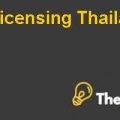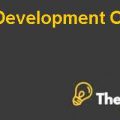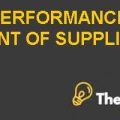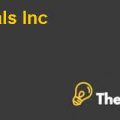In addition to that, the DCF analysis of the company with three different financing structures of 37%, 30% and 25% equity ratios provide Berkshire with positive net present values, making it a financially viable investment.
The DCF analysis of the company is made by using the five years forecasted financial data provided by the company’s management. The free cash flows for the company are calculated and the terminal value is calculated by using the growth rate of 3%.
The cost of debt of the company is calculated by taking an average of the three debts provided, when the LIBOR is 4.3%. The cost of debt is 9%, and the cost of equity of the company is assumed to be 40%, which is the typical cost of equity in a leveraged buy out.
The WACC of the company is calculated by using three different debt to equity ratios. The higher limit is set by using $130 million as equity, which is required by the management of Carter’s. After that, a normal 70% 30% ratio is taken and the lowest limit is set by using 25% as equity, which is the minimum requirement of Berkshire when making an investment.
All of these ratios provides three different costs of capitals, and thus three different NPV’s for the project. All of the NPVs are positive, determining that the project is financially viable for Berkshire at all cost structures.
Therefore, the pros of the investment are more than its cons, and the brand image and reputation of the company is good enough to make it an attractive investment for Berkshire. Hence, it is recommended that the firm should make a bid for Carter’s.
The calculations for the valuation are given in the excel file provided.
How much should Berkshire be willing to pay?
Berkshire should keep the bid price between the highest and the lowest Net Present Values of the Enterprise, which are calculated. The highest bid made by the company should be around $746 million and the lowest bid that Berkshire can make is $569 million. Any amount of bid made between these is acceptable, as after deducting the debt this will provide the company with positive returns.
What should be the bid structure?
The company should choose the financial structure to be 37% equity and 63% of debt, which is a bid of $569 million. This will provide the company with an enterprise value of above $1000, 000 when using multiples approach. The financial results for Berkshire would then be above $400 million, which is profitable for the company and so would provide it with incredible growth and high incremental cash flows. However, if the company selects a higher cost structure, the results might turn out to be negative.......
This is just a sample partical work. Please place the order on the website to get your own originally done case solution.







